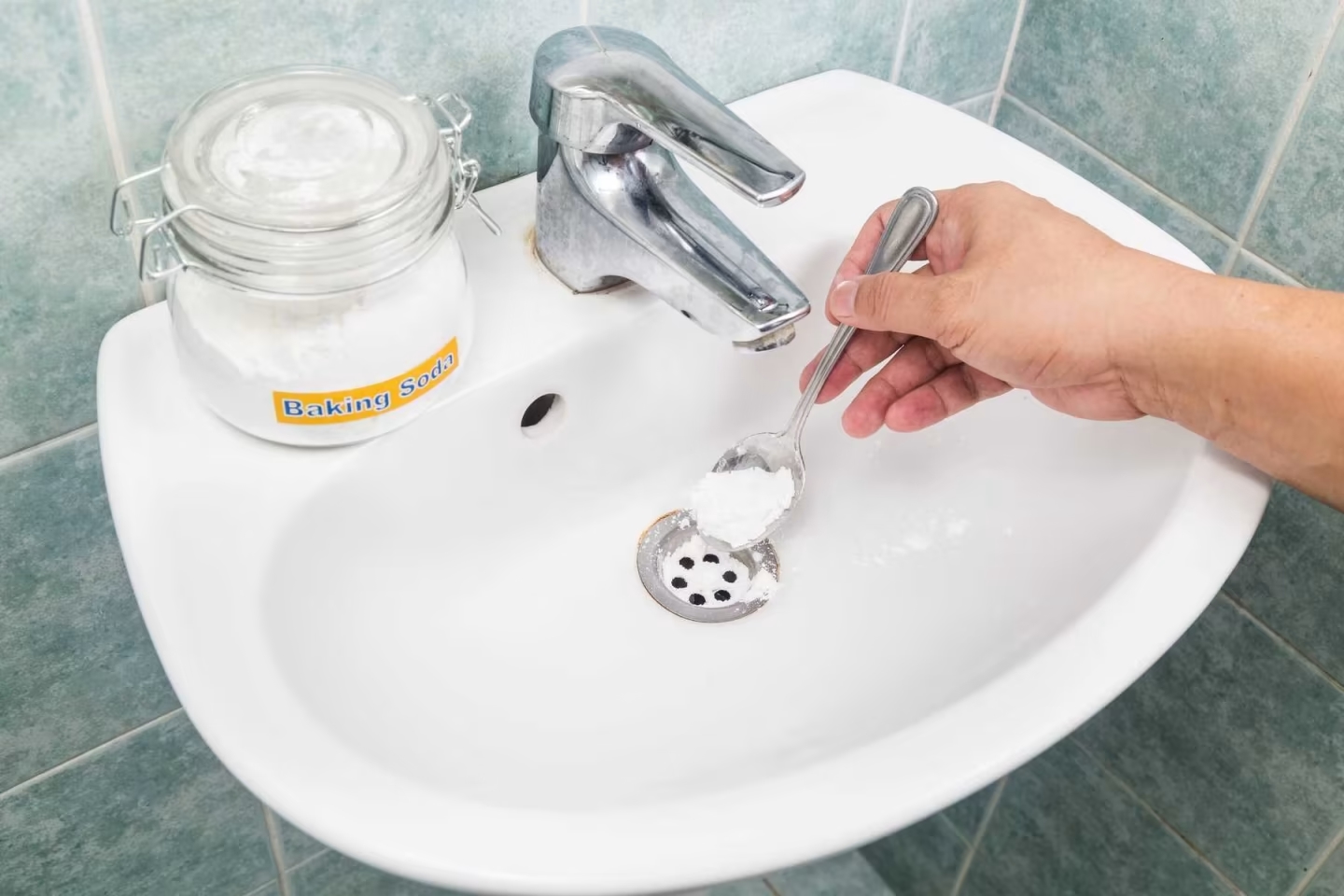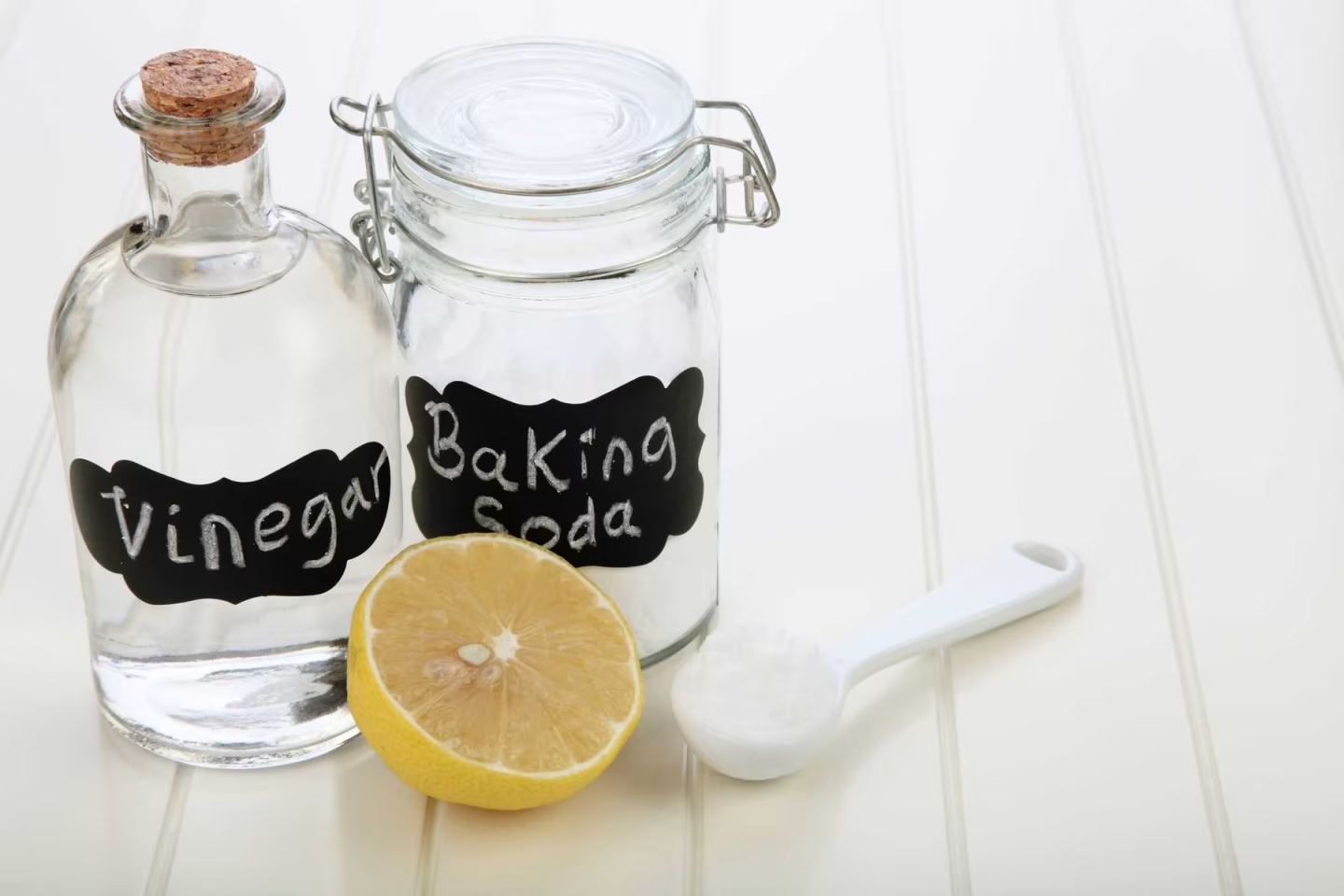Nowadays, most facial sinks are made of white porcelain. After a long period of use without regular cleaning, facial sinks can easily accumulate bacteria, sweat, and dirt, making them appear yellowed and even covered in a layer of black stains that affect both aesthetics and health. To clean them, it is actually very simple, just follow the steps below and the facial sink will be sparkling clean without spending too much time on cleaning.

1. Soap with hot water
Soap with hot water is an incredibly simple way to clean facial sinks but can bring surprising results.
How to do it: Dissolve soap in a basin of hot water to form a solution. Use a sponge or a soft, damp cloth to soak in the hot soap solution, then scrub around the sink. After wiping the entire surface, rinse with hot water.
Note: Absolutely do not use hard metal or plastic brushes that may scratch the enamel coating.
2. Baking soda and white vinegar
Baking soda and white vinegar are household ingredients known for their excellent cleaning properties. These two ingredients will help you quickly tackle yellow stains on the facial sink.
How to do it: First, evenly sprinkle baking soda over the entire surface of the facial sink. Then, use diluted white vinegar in a spray bottle to spray directly onto the sink. After 30 minutes, use a brush to thoroughly scrub the entire sink, especially areas with long-standing stains and yellow marks. Finally, rinse off with water, along with a little soap to eliminate the vinegar smell.

3. Use lemons
Fresh lemons, including lemon peels, can be used to clean facial sinks. Simply cut a lemon in half and use each piece to scrub the entire sink. For stubborn yellow stains or long-standing buildup, apply a little lemon juice directly to the surface, let it sit for 15-20 minutes, then scrub again with the lemon peel.
4. Use rice wine
Cleaning facial sinks with rice wine is a highly effective method that most people are not aware of. Aside from whitening all yellow stains and long-standing buildup, this ingredient also has antibacterial properties.
How to do it: Soak a soft cloth in a sufficient amount of rice wine and rub it onto the stains and buildup until they are completely removed. To get rid of the rice wine smell, you can soak the facial sink in a solution of lemon juice or soap for about an hour. Finally, rinse thoroughly with water and dry.
5. White vinegar
In addition to lemons, you can use white vinegar to whiten the facial sink. Vinegar, with its acidic properties, can help dissolve and break down stubborn dirt and stains on the sink’s surface.
How to do it: Pour vinegar directly to wet the entire surface of the facial sink. Leave it on for 15 to 30 minutes to allow the vinegar to penetrate and break down the dirt. Finally, use a soft brush to scrub and rinse with water.
6. Fresh lemons and tartaric acid
Lemons and tartaric acid, both easily found ingredients at home, have strong cleaning properties. Using tartaric acid and lemons can quickly remove yellow stains and long-standing dirt on facial sinks without corroding the enamel layer like chemical cleaners.
How to do it: Mix lemon juice and tartaric acid at a 1:1 ratio. Then, use a soft cloth or sponge to wipe the entire surface of the facial sink, especially stubborn dirt. Let the solution sit for about 20-30 minutes, then rinse with clean water.
7. Combination of baking soda and vinegar for facial sink whitening
The combination of baking soda and vinegar will enhance the whitening effect on porcelain facial sinks, making the process faster and more convenient.
How to do it: First, sprinkle baking soda all over the surface of the facial sink. Then, wet the sink with vinegar. If it is too difficult to apply, you can mix baking soda and vinegar at a 1:1 ratio to form a paste and apply it to the surface.

When baking soda and vinegar come into contact, you will see bubbling occur. This is a normal phenomenon that proves these two substances react well to each other. Leave this mixture for 30 minutes to let the foaming action remove the dirt from the surface. Finally, rinse with clean water.
By An Nhiên – Vietnamnet
1. Soap and Hot Water: Dissolve soap in hot water, use a sponge or soft cloth to scrub the sink with the solution, then rinse with hot water.
2. Baking Soda and White Vinegar: Sprinkle baking soda over the sink, spray diluted white vinegar, wait 30 minutes, scrub, and rinse.
3. Fresh Lemons: Cut a lemon in half and use it to scrub the sink. For stubborn stains, apply lemon juice, wait 15-20 minutes, then scrub again.
4. Rice Wine: Soak a soft cloth in rice wine and rub it onto stains until they disappear. Remove the smell by soaking the sink in lemon juice or soapy water, then rinse and dry.
5. White Vinegar: Pour vinegar on the sink’s surface and let it sit for 15-30 minutes. Use a soft brush to scrub, then rinse with water.
6. Lemons and Tartaric Acid: Mix lemon juice and tartaric acid in a 1:1 ratio. Use a soft cloth or sponge to apply it to the sink, especially on stubborn dirt. Rinse after 20-30 minutes.
7. Baking Soda and Vinegar Combination: Sprinkle baking soda on the sink, then apply vinegar. Alternatively, create a paste by mixing them in a 1:1 ratio and apply it to the surface. Rinse with clean water after 30 minutes.






































